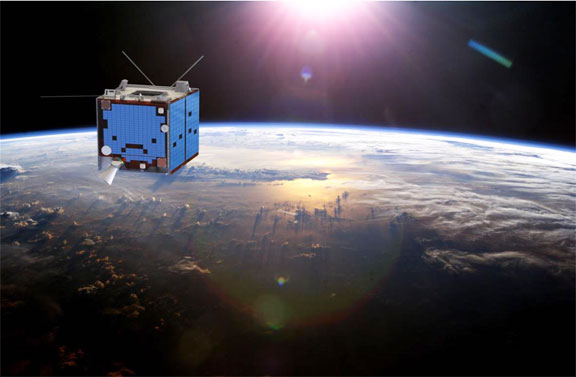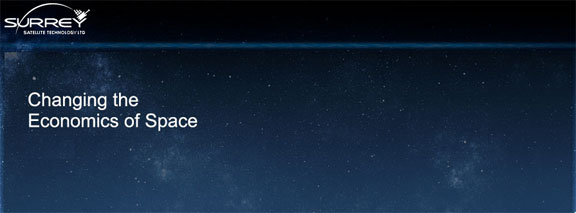....the U.K.’s technology demonstration satellite TechDemoSat-1 with the successful testing of the engineering model of the first payload, a novel charged particle spectrometer design. The Charged Particle Spectrometer (ChaPS) built by UCL’s Mullard Space Science Laboratory (UCL-MSSL), has a form factor of a 1-U CubeSat. It will demonstrate a novel payload design that combines the capabilities of multiple analyzers by using four miniaturized sensors to perform simultaneous electron-ion detection. Each of the sensors is optimized to carry out electrostatic analysis of the different space plasma populations expected in Low Earth Orbit (LEO). ChaPS is extremely attractive because it saves mass, power and volume – and ultimately mission cost – while providing an enabling technology for future space missions such as ESA’s proposed JUICE mission to Jupiter. Its low cost also opens up new applications for such instrumentation that were simply not feasible in the past.

Artistic rendition of SSTL's TechDemoSat-1
Dhiren Kataria, the lead for MSSL’s miniaturisation activities, said, “TechDemoSat-1 provides a powerful technology demonstration capability and flight demonstration of the ChaPS instrument on this mission will provide a significant step forward in the adoption of a ‘disruptive’ technology being developed at UCL/MSSL. This will open up a number of new commercial as well as scientific applications.”
MSSL specializes in plasma instrumentation and has previously delivered instruments for a range of missions, such as the multi-spacecraft Cluster mission, the Cassini mission to Saturn, and the Giotto mission to comet Halley. The ChaPS payload was developed over the past 12 months in its state-of-the-art test and calibration facilities. ChaPS has been subjected to benchmark, stress and functional tests on the control interface at SSTL’s new Kepler technical facility to ensure robustness and reliability, with extremely encouraging results. The TechDemoSat-1 Electrical Ground Support Equipment successfully transmitted and received housekeeping data and the spacecraft operators were able to command ChaPS using the SSTL ground station software. The payload is now being used by the SSTL team to conduct early risk reduction testing on the satellite's command and control interface.
ChaPS is one of eight British payloads that will be flown on TechDemoSat-1, which is the first collaborative U.K. Space Agency mission. Funded by the Technology Strategy Board (TSB), the U.K. Space Agency and the South East England Development Agency (SEEDA), TechDemoSat-1 is being built by SSTL to demonstrate the advanced capabilities of small satellite technology and provide invaluable in-flight demonstration of new British equipment and technologies. TechDemoSat-1 is due to launch in 2012. The U.K. Space Agency is currently in early discussions with the European Space Agency regarding a suitable launch for TechDemoSat-1.


